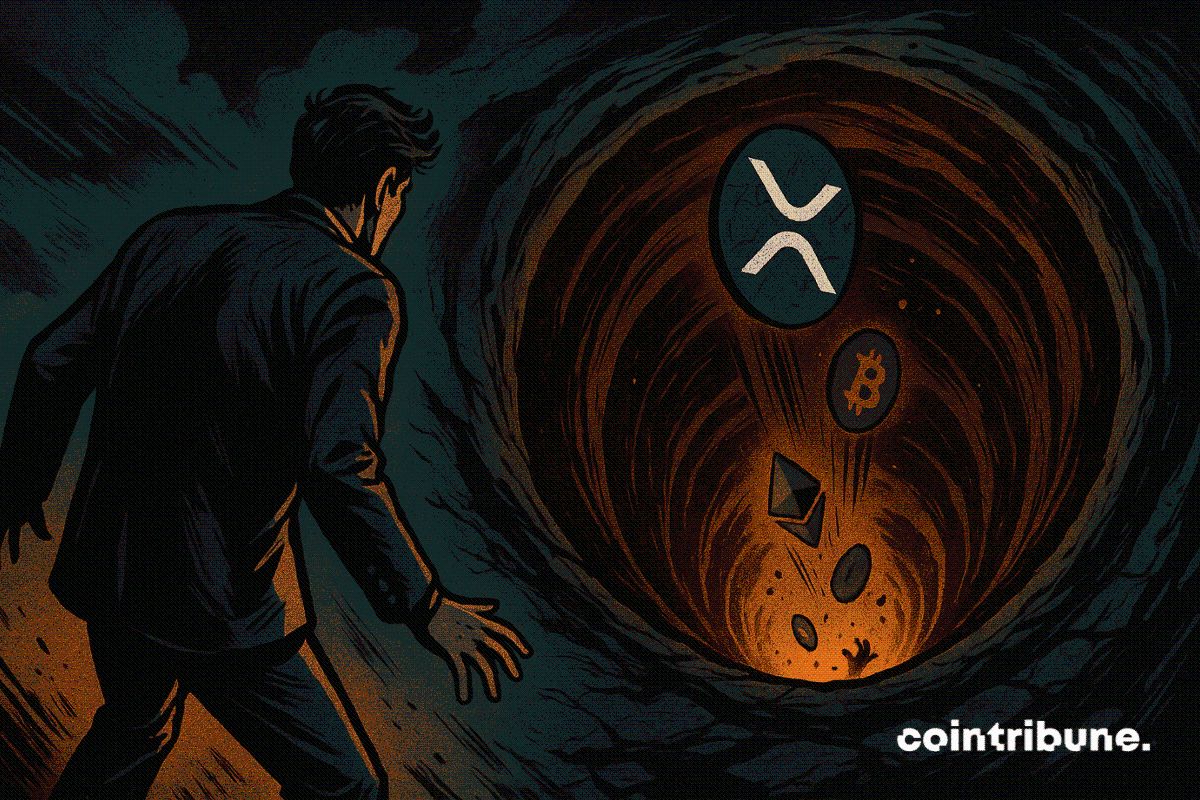Bitcoin's Weakening Momentum and the Looming Correction: A Cautionary Tale for Crypto Investors
- Bitcoin faces triple threats: deteriorating technical indicators, Fed liquidity withdrawal, and bearish options positioning trigger correction risks. - MACD divergence and RSI weakness signal momentum exhaustion, while $14.6B in BTC puts highlight market capitulation fears. - Gamma pressure intensifies near $111K, with 20% drop in perpetual futures open interest and ETF outflows from BlackRock/Fidelity. - Strategic hedging (puts/futures) and position reduction urged as liquidity shocks expose crypto mark
Bitcoin's recent trajectory has been a masterclass in the fragility of speculative markets. After a meteoric rise fueled by post-pandemic liquidity and regulatory optimism , the cryptocurrency now faces a confluence of technical, macroeconomic, and market sentiment headwinds. The interplay of deteriorating technical indicators, the Federal Reserve's liquidity drain, and bearish options positioning has created a perfect storm, amplifying the risk of a significant correction. For investors, the message is clear: strategic hedging and position reduction are no longer optional—they are imperative.
The Technical Warning Signs
Bitcoin's technical indicators have turned sharply bearish. On the weekly chart, a classic bearish divergence emerged between price and the MACD. Despite Bitcoin hitting a new high of $124,000 in mid-August, the MACD formed lower highs, signaling waning momentum. This divergence—a harbinger of trend exhaustion—was followed by a 12% drop to $108,700 by month-end. The daily chart painted an even grimmer picture: Bitcoin broke below a clean upward trendline and the 100-day simple moving average (SMA), a critical support level. With the 200-day SMA ($101K) now in play, the path of least resistance is decisively downward.
The RSI, once a beacon of bullish optimism, has also turned uncharacteristically bearish. While it briefly rebounded above the 30 oversold threshold in early August, the indicator now lingers in neutral territory, failing to confirm any meaningful recovery. Worse, the RSI has shown bearish divergences of its own, with price making higher lows while the RSI forms lower lows—a pattern historically associated with capitulation.
The Fed's Liquidity Drain: A Macro-Level Catalyst
The Federal Reserve's tightening cycle has been a silent killer for speculative assets. The liquidity that once buoyed Bitcoin's price—spurred by near-zero interest rates and quantitative easing—is now being systematically withdrawn. With the Fed signaling a cautious approach to rate cuts and inflation stubbornly above target, the cost of carrying leveraged long positions has spiked. This has forced margin calls and forced selling, exacerbating Bitcoin's downward spiral.
The liquidity shock in late August underscored this dynamic. A $2.7 billion whale dump on platforms like Hyperliquid sent Bitcoin below $112,700, triggering a flash crash and wiping $623 million in leveraged long positions. Such events highlight the fragility of Bitcoin's ecosystem, where a handful of large actors can destabilize the market overnight.
Bearish Options Market: A Canary in the Coal Mine
The crypto options market has become a reliable barometer of investor sentiment—and it's screaming danger. Over $14.6 billion in BTC and ETH options are set to expire in August 2025, with a disproportionate amount concentrated in Bitcoin puts in the $108K–$112K strike zone. This defensive positioning reflects a growing consensus that further downside is imminent.
Gamma pressure—a measure of the rate at which options positions adjust as the underlying asset's price moves—has also intensified. As Bitcoin approaches $111K, the risk of a self-reinforcing sell-off grows. Traders are hedging aggressively, with the 90-day BTC skew turning negative and open interest in perpetual futures contracts declining by 20% from July levels. Institutional players, including BlackRock and Fidelity, have seen net outflows from Bitcoin ETFs, signaling a shift away from the asset.
Strategic Hedging: A Prudent Path Forward
For investors still holding Bitcoin, the priority must now shift to risk mitigation. Here are three actionable steps:
- Reduce Exposure Gradually: Liquidate a portion of long positions as Bitcoin tests key support levels like $108K and $101K. A trailing stop-loss order can help lock in gains or limit losses during volatile swings.
- Hedge with Puts or Short-Term Derivatives: Given the bearish options environment, purchasing put options or short-term futures can offset potential downside risks.
- Diversify into Alternatives: While Bitcoin remains a core holding for many, capital reallocation into Ethereum and altcoins with real-world utility (e.g., Solana , Cardano) may offer better risk-adjusted returns in a correctionary phase.
The Bigger Picture: A Market in Transition
Bitcoin's current struggles are not a death knell for crypto but a reminder of its inherent volatility. The broader institutional adoption narrative—bolstered by regulatory progress and 401(k) integration—remains intact. However, the immediate-term outlook is fraught with uncertainty. The upcoming Jackson Hole Economic Symposium and the Fed's policy decisions will be critical inflection points. A hawkish pivot or delayed rate cuts could deepen the correction, while a dovish surprise might provide a temporary reprieve.
In this environment, patience and discipline are virtues. Investors who hedge prudently and reduce risk exposure now will be better positioned to capitalize on the next leg of Bitcoin's cycle—whenever it arrives.
Final Word: The convergence of technical weakness, macroeconomic headwinds, and bearish market sentiment has created a high-risk environment for Bitcoin. For crypto investors, the time to act is now—before the correction deepens and liquidity dries up entirely.
Disclaimer: The content of this article solely reflects the author's opinion and does not represent the platform in any capacity. This article is not intended to serve as a reference for making investment decisions.
You may also like
Google executive makes millions of dollars overnight through insider trading
Insider addresses manipulated Google's algorithm by referencing prediction market odds.

Stablecoins in 2025: You Are in Dream of the Red Chamber, I Am in Journey to the West
But in the end, we may all arrive at the same destination through different paths.

XRP’s Extreme Fear Level Mirrors Past 22 % Rally

Critical Bitcoin Bear Market Signal: 100-1,000 BTC Wallet Buying Slows Dramatically